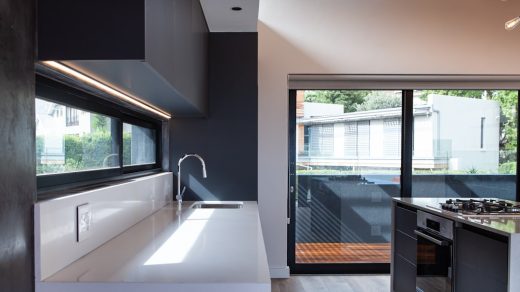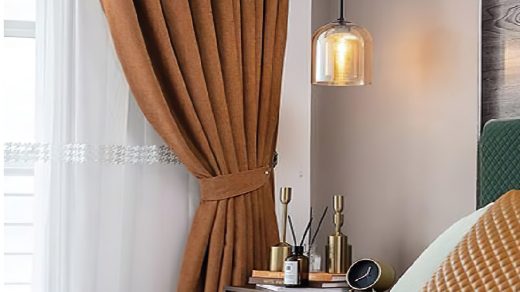Vintage Sconce Adds Charm to Study Wall
Vintage sconces are wall-mounted light fixtures that have endured in popularity due to their aesthetic appeal and versatility. These lighting elements have been used in interior design for centuries, complementing various decor styles from traditional to contemporary. Vintage sconces are valued for their ability to create a warm, inviting ambiance and can be found in diverse designs ranging from ornate Victorian-era pieces to streamlined mid-century modern styles.
The appeal of vintage sconces Nuovavia extends beyond their functional purpose as lighting fixtures. Many are considered collectible items due to their historical significance and craftsmanship. Antique sconces are often made from durable materials such as brass, bronze, or crystal, and feature intricate details that showcase the skill of their creators.
This level of artistry and attention to detail is frequently cited as lacking in many modern lighting options. Vintage sconces can add character and a sense of history to interior spaces. Their enduring popularity is attributed to their ability to serve as both functional lighting solutions and decorative elements that enhance the overall aesthetic of a room.
Collectors and design enthusiasts appreciate vintage sconces for their craftsmanship, historical value, and ability to add a unique touch to contemporary interiors.
Choosing the Right Vintage Sconce for Your Study
Size and Scale
The size and scale of the sconce in relation to the space is a crucial consideration. A small study with limited wall space calls for a petite sconce with a delicate design, while a larger study with high ceilings can accommodate a more substantial sconce with a grander presence.
Aesthetic and Style
The overall aesthetic of your study is another important factor to consider. A traditional, wood-paneled study may be complemented by a classic brass or bronze sconce with ornate detailing, while a sleek mid-century modern sconce could be the ideal choice for a more contemporary study.
Lighting and Functionality
The type of lighting the sconce provides is also essential. If you need focused task lighting for reading or working at your desk, a sconce with an adjustable arm and shade may be the best option. Alternatively, if you’re looking to create a cozy ambiance for relaxing and unwinding, a sconce with a soft, diffused light may be more suitable.
Installing a Vintage Sconce: Tips and Tricks
Installing a vintage sconce can be a rewarding DIY project that adds character and charm to your space. However, it’s important to approach the installation process with care and attention to detail to ensure that your sconce is safely and securely mounted. Before you begin, make sure to turn off the power to the area where you’ll be working to avoid any electrical hazards.
If you’re not comfortable working with electrical wiring, it’s best to hire a professional electrician to handle the installation for you. When it comes to mounting the sconce itself, consider the height at which it will be placed – generally, sconces should be mounted at eye level when standing or sitting in the space where they’ll be used. If you’re installing multiple sconces in a row, make sure they are evenly spaced and aligned for a cohesive look.
Additionally, take into account the type of wall surface you’ll be mounting the sconce on – if it’s drywall, you’ll need to use anchors to support the weight of the fixture, whereas mounting directly into studs may be necessary for heavier sconces. Once your sconce is securely mounted, it’s time to connect the wiring. Follow the manufacturer’s instructions carefully, and if you’re unsure about any aspect of the wiring process, consult with an electrician.
After the wiring is complete, attach the sconce to the mounting plate or bracket according to the manufacturer’s guidelines. Finally, turn the power back on and test your new vintage sconce to ensure that it’s functioning properly. With careful planning and attention to detail, installing a vintage sconce can be a satisfying project that adds both beauty and functionality to your space.
Incorporating Vintage Sconces into Modern Decor
While vintage sconces are often associated with traditional or period-style interiors, they can also be successfully incorporated into modern decor for an unexpected and eclectic touch. The juxtaposition of old and new creates visual interest and depth in a space, adding character and personality to an otherwise contemporary setting. One way to seamlessly integrate vintage sconces into modern decor is by choosing fixtures with clean lines and simple silhouettes that complement the minimalist aesthetic often found in modern interiors.
A sleek mid-century modern sconce with a timeless design can provide a striking contrast against clean, white walls or bold, graphic wallpaper. Another approach to incorporating vintage sconces into modern decor is by using them as statement pieces that add an element of surprise and intrigue. Consider placing an ornate Victorian-era sconce in an otherwise sleek and streamlined space for an unexpected twist that sparks conversation and draws the eye.
By strategically placing vintage sconces in key areas such as entryways, hallways, or above a fireplace mantel, you can create focal points that anchor the room and infuse it with personality and charm. Additionally, mixing and matching different styles of vintage sconces can create an eclectic and curated look that feels fresh and dynamic. When integrating vintage sconces into modern decor, it’s important to consider the overall balance and cohesion of the space.
By thoughtfully selecting sconces that complement the existing design elements and color palette, you can create a harmonious blend of old and new that feels cohesive and intentional. Whether you’re drawn to the timeless elegance of Art Deco crystal sconces or the industrial chic vibe of mid-century brass fixtures, vintage sconces offer endless possibilities for adding character and style to modern interiors.
Maintenance and Care for Vintage Sconces
Proper maintenance and care are essential for preserving the beauty and functionality of vintage sconces. Over time, dust, dirt, and grime can accumulate on the surface of sconces, dulling their finish and diminishing their luster. Regular cleaning is key to keeping vintage sconces looking their best – use a soft, dry cloth to gently wipe away any surface dust or debris, taking care not to scratch or damage delicate finishes.
For more thorough cleaning, lightly dampen a cloth with water or a mild cleaning solution specifically formulated for the type of material your sconce is made from. In addition to regular cleaning, it’s important to inspect your vintage sconces periodically for any signs of wear or damage. Check for loose or missing screws, cracked glass shades, or frayed wiring that may need attention.
Addressing these issues promptly can prevent further damage and ensure that your sconces continue to function safely and effectively. If you notice any significant damage or deterioration, it’s best to consult with a professional lighting specialist or restorer who can provide expert care and restoration services. When it comes to caring for vintage sconces with metal finishes such as brass or copper, consider using a specialized metal polish to maintain their shine and patina.
Be sure to follow the manufacturer’s instructions carefully and test any cleaning products on a small, inconspicuous area before applying them to the entire fixture. For crystal or glass sconces, avoid using abrasive cleaners or harsh chemicals that can damage or etch the surface – instead, opt for a gentle glass cleaner applied with a soft cloth for safe and effective maintenance. By investing time and attention into proper maintenance and care for your vintage sconces, you can ensure that they remain beautiful and functional for years to come.
The History and Origins of Sconces
The Medieval Roots of Sconces
The word “sconce” itself has its roots in Old French and Middle English, originally referring to a protective fortification or shelter for candles or torches. In medieval times, wall-mounted torches were commonly used for illumination in castles, monasteries, and other structures where natural light was scarce.
From Function to Ornate Decoration
Over time, these functional lighting fixtures evolved into more ornate and decorative forms that reflected the craftsmanship and design sensibilities of their era. During the Renaissance period in Europe, sconces became increasingly ornate and elaborate, featuring intricate metalwork, carved wood details, and embellishments such as gilding and enamel. These decorative sconces were often used in grand palaces and noble residences as symbols of wealth and status, showcasing the opulence and refinement of their owners.
Evolution and Innovation in Sconce Design
As advancements in lighting technology led to the widespread use of candles and later gas lamps, sconces continued to evolve in both form and function, adapting to new materials and design trends while retaining their timeless appeal. In the 20th century, the advent of electricity brought about significant changes in lighting design, leading to the development of electric sconces that offered greater convenience and versatility. Art Deco sconces from the 1920s and 1930s embraced sleek lines, geometric shapes, and luxurious materials such as chrome and glass, reflecting the modernist aesthetic of the era. Mid-century modern designers such as George Nelson and Serge Mouille further pushed the boundaries of sconce design with innovative forms that blurred the line between art and function.
DIY Vintage Sconce Restoration: A Step-by-Step Guide
Restoring vintage sconces can be a rewarding DIY project that allows you to breathe new life into cherished heirlooms or flea market finds. Whether you’re drawn to the timeless elegance of crystal chandeliers or the industrial charm of mid-century brass fixtures, restoring vintage sconces can be a labor of love that yields beautiful results. Before you begin any restoration work, it’s important to assess the condition of your sconce and determine what repairs or improvements are needed.
The first step in restoring vintage sconces is thorough cleaning – remove any accumulated dust or grime using a soft cloth or brush, taking care not to damage delicate finishes or components. For metal fixtures such as brass or copper sconces, consider using a specialized metal polish to remove tarnish and restore their shine. If your sconce has glass or crystal elements, gently clean them with a mild glass cleaner applied with a soft cloth to remove any smudges or residue.
Once your sconce is clean, inspect it for any signs of damage such as loose parts, chipped paint or finish, or frayed wiring. Addressing these issues may require some basic repair skills such as soldering loose connections or replacing damaged components. If your sconce has missing or damaged parts such as glass shades or decorative elements, consider sourcing replacements from specialty lighting suppliers or antique restoration shops.
After any necessary repairs have been made, consider refinishing your vintage sconce if its original finish has become worn or damaged over time. Depending on the material of your fixture, this may involve stripping old paint or lacquer, applying a new finish such as paint or patina solution, and sealing it with an appropriate protective coating. Be sure to follow all safety precautions when working with chemicals or solvents during the refinishing process.
Finally, reassemble your restored vintage sconce carefully according to its original design – take care not to force any components together or over-tighten screws that could cause damage. Once your restoration work is complete, take pride in knowing that you’ve preserved a piece of history while adding beauty and character to your space with a lovingly restored vintage sconce.




